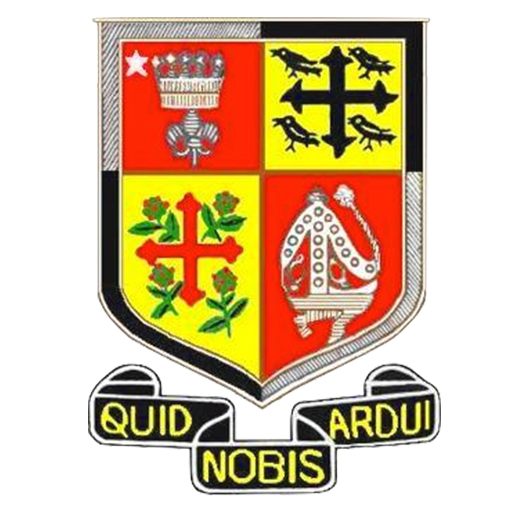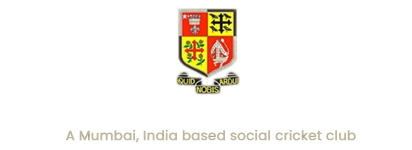our Parent Club’s history
In February 1848, four gentlemen met at the home of Mr Pickering-Clark, at 17 Earls Terrace, to discuss the possibility of forming a cricket club.
The first meeting to inaugurate the club took place at the Kings Arms Inn. A few days later on 17 February 1848, Mrs Johnson of Holland Farm agreed to let her field for £15 per annum at a rate of £5 per acre. The subscription was agreed at a guinea a year and rules were drawn up which included a fine of 2s 6d (12.5p) on any member who left before the end of a club game without supplying a substitute.
One of the first games took place in June, after which it was resolved that members should be requested to refrain from smoking while playing.
At the beginning of the second season the subs were raised by 4s and members agreed to pay 6d a head when matches were played between themselves if on the losing side.
Despite a riotous party (which took five pages of the Minute Book to record!) interest had waned so much that it was decided to dissolve the club at the end of the year.
However, cricket was not entirely dead in Kensington. The game was mentioned in the Kensington Gazette, published between 1853 and 1855.
The report includes an account of “a curious incident” when the “worthy bowler, Mr Smallbone, came into the field quite lame from a bruise he received under his knee and being under medical advice, was allowed to have a man run for him but no sooner had he hit the ball, such is the exhilaration of the game, that his lameness and the doctor were forgotten, and he started running and arrived at the opposite wicket before his deputy. Mr Smallbone continued in his enthusiasm and managed to take no fewer than seven wickets.”
Bishop’s Stortford, a club with whom we have played regularly, recently uncovered old fixture lists that showed Kensington played them in 1905 and 1906.
The existing Kensington Cricket Club was reborn in 1973. The side began as “The Devonshire XI” in Marloes Road in order to play one game for charity against “The Lamb Inn” (a pub in Andover whose proprietor was Anthony Rickard’s father).
The HQ then moved to “The Britannia” in Allen Street via “The Scarsdale” in Edwardes Square. The Club was renamed “True Brits”. The number of fixtures gradually increased. In 1982 Sunil Amar called an Extra-ordinary General Meeting, a committee was elected and the Royal Borough’s permission was obtained to use the name “Kensington”; the team was christened “The Kensington Cricket Club”.
Sunil Amar of 118 Lexham Gardens, W8 and Anthony Rickard of 126 Lexham Gardens, W8 were elected the first Captain and Chairman respectively, with Richard Waters as the Secretary and Bill Rodwell as Fixture Secretary.
The success and popularity saw a rapid increase in the number of seriously contested matches with more established clubs. The playing membership stabilised at 30 – 35, and the fixtures were kept to one a weekend in recognition of the growing demands of family and other commitments. We have toured in Europe quite frequently: Rome, Brussels, Antwerp, Amsterdam, Paris, Utrecht and, more recently, Corfu, Costa Blanca, Malta, Menorca, Brittany, Oporto and Bucharest. In October 2008 we went to India. With new members joining we added fixtures to ensure full participation, sometimes putting out two sides on Sundays. And, of course, we still continue to tour.
In 2012 we celebrated the 40th anniversary of the Club’s rebirth and, as the cut-off age in our annual Youths v Veterans festival tends to be 35+, many of our current members were not even born when we re-founded this now growing and prospering club. Hopefully, a 50th year will be celebrated in style by these same Youths of today.

ARMS: quarterly gules and gold; in the first quarter a gold celestial crown above a gold fleur-de-lis and in the dexter chief point a silver star; in the second, a cross flory and four martlets all sable; in the third, a cross bottony and four roses gules, their stems and leaves proper; and in the fourth a gold mitre; all within a bordure quarterly or and sable. Motto: Quid nobis ardui – “What is hard for us?”
These arms were granted in 1901.
The celestial crown and fleur-de-lis stand for the Virgin Mary, to whom the parish church is dedicated. The other emblems refer to successive Lords of the Manor.
From the eleventh to the sixteenth century the manor was held by the De Veres whose arms, red and gold quarters with a silver star in the first, form the basis of the Borough Arms. From the De Veres part of the manor passed to the Abbey of Abingdon, which is represented by its arms in the second quarter and the mitre in the fourth quarter of the Borough shield.
In the third quarter, the roses represent Sir Walter Cope who bought the manor in 1610 (his ancestor derived the red rose from his adherence to the Lancastrian cause); and the cross bottony by marriage is taken from the arms of Sir Henry Rich, who obtained the manor by marriage with the heiress of the Copes and was raised to the peerage as Baron Kensington.
Kensington is a Royal Borough.


